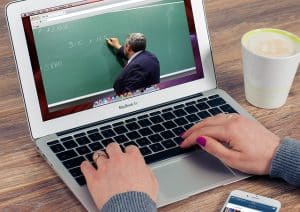Some common learning styles are kinesthetic, verbal, and visual. Here are some teaching styles and how to introduce them into a corporate setting.

Of course, this takes a lot more time to do so, especially when there is a lot on the curriculum that needs to be covered. Presenting stimulus in different ways that have varying levels of engagement with students is a quality that is particularly significant when teaching younger children.
This is because it can be especially difficult for them to sit and take in new information when their brains are still developing.
It is important to find an exciting way to present new information in order to encourage students to absorb what they need to learn, and even encourage them to show what they know with quizzes and exercises.
However, the term ‘learning styles’ became popular around the eighties and nineties, which suggests that the idea is directly related to the emphasis on self-esteem. Some people believe that the different learning styles are more of a trend, and that there is less scientific evidence to back it up.
Everybody’s brain is unique and works differently, so it seems logical that there would be different learning styles.
Depending on whether you have struggled in the past to retain new information, or if you are a teacher wanting to engage their students, some of the most widely recognized styles of learning are visual, auditory, verbal, and mathematical.
These are some of the things that teachers take into account when creating their lesson plans.

Additional factors that come into play when determining teaching and presenting methods are personality, someone’s perceived way of thinking, and overall group dynamic. These are among the most significant and influential points to consider when you are presenting to any group of people.
It is worth trying to include critical thinking, ask questions, and provide a level of interaction that would otherwise not be there. Even the most captivated audiences can doze off from time to time, which is why you should try to engage them wherever possible.
Because of the relatively low amount of evidence, as well as the lack of inclusivity of corporate presentations, it has been argued that people don’t have a specific learning style that is dominant.
Studies have shown that people tend to retain more information when it is in a form that they like, rather than focusing on how their brain works necessarily.
Because a lot of office environments can still rely on formal, instructor-led presentations that are usually shown on big screens, it could also be suggested that finding different learning styles is something that is encouraged more in children whose brains are still developing.
The different learning styles have been explored below, as well as how they could possibly be integrated into a corporate setting.
Some of the more commonly recognized types of learners include audio, visual, and kinesthetic. While there has been some debate about the importance of these, and catering lessons to each of them, it has also been argued that there is no specific division.
People tend to learn and think in a few different ways, and many will use a combination of the different styles to create the best learning conditions for themselves.
Importance Of Learning Styles

Being aware of learning styles is considered imperative for many teachers who want to ensure that their students are retaining new information, and learning how to process it.
Not only that, but teachers need to keep their students engaged for prolonged periods of time so that they can ask questions and prepare them for later life. Of course, it has been argued that different learning styles play a less important role in adult life.
However, that is largely because of the increased level of independence that comes with adulthood. Some have argued that the different learning styles came into light during the increase in self-esteem oriented teaching that began in the late eighties.
Others have criticized this and said that the different learning styles are more global, and come from the influence of different forms of thinking.
Behavior is another reason why learning styles are important when teaching children. This is because young pupils who are not engaged in learning can get bored easily and create disruptions.
Using different modes of presenting a curriculum can therefore be beneficial because it can cause less of a distraction and allow those who have lower attention spans to learn new things without even knowing it.
For some children who have a history of being more challenging, it might be that they struggle to express their needs effectively. If you want to attempt to break this cycle, you could try showing them how to paint, draw, or even build things, or even find an outlet in a certain sport.
It’s important to try and get these children back on track and to a stage where they can properly engage and contribute in lessons.
Teachers don’t get enough credit for what they do, and being able to hold the attention of a room full of children is tough on the easiest of days. For those who have less assistance, it might be the case that you need to change your lesson plan to fit children who might have certain learning difficulties.
These can range in severity, and consist of anything from dyslexia, to more complex behavioral conditions. Being aware of how these students access information, and developing a lesson plan or worksheets from this, is something that is often underestimated, but can make the world of difference for that individual.
Some teachers group their pupils together based on their perceived learning styles. This enables them to work on communication skills and bounce ideas off each other. Something that can be done using slightly older students is to try different methods of teaching, and asking them for feedback about what they preferred.
Those with specific learning requirements should be the priority before deciding where to sit others. This is because some situations can create more challenging conditions for them which make it very difficult for them to absorb information and digest it effectively in order for it to enter their long-term memory store.
Learning styles can also be important within a corporate environment. Because long presentations (death by PowerPoint) are often difficult to sit through, formal presentations could be improved by being more engaging through interactive experiences (experiential learning).
In addition, it might be worth finding ways to present information differently, such as using hand out sheets, checklists or encouraging people to take notes. Another thing that could be done within an office environment is to include visual aids, encourage movement and even auditory stimulus.
Also you could transform your corporate learning function to create elearning in short bursts of information, so it is more easy to retain the information. This could create a much more immersive presentation experience, and you could try experimenting with different combinations to see what is the most effective method.
Popular Learning Styles

Most believe that there are seven learning styles, and there are different attitudes towards how each of them can be catered for within a professional and educational setting.
Prior to the integration of all seven styles of learning, it was widely believed that the learning styles featured the VARK abbreviation. This stands for Visual, Aural, Reading/ Writing, and Kinesthetic. These are based on some of the most widely known ways of thinking, and how children are able to take on new information.
While it has been argued that some of the more common learning styles are based on popular trends, there are some learners that require different types of assistance. Some of the popular learning styles have been discussed below.
Visual Learners
Even if you teach the same classes every day, time management is more challenging when conducting distance learning. Get yourself a nice 1-year daily planner that you can leave open at your workspace, so you do not accidentally miss a class or an important meeting.
If you are feeling extra fancy, get yourself a planner that you can customize that adds pops of color to your workspace and a bit of excitement to your life.
Auditory Learners
Students who prefer to listen to spoken language rather than read a body of text might be an auditory learner. It has been argued that sound is the best way in which their minds can take on new information.
These are some of the easier to distract students in the presence of background noise. Something that you can do to engage aural learners is to encourage them to read their work out loud to allow them to process what they are doing.
Kinesthetic Learners
Also known as physical or tactile learners, kinesthetic learners find it easiest to absorb new information by moving or doing things. These types of students often have a preference for sports or dance, and will tend to need more regular breaks due to their difficulties sitting still.
Acting out scenarios can be beneficial for kinesthetic learners, which means that there is a deeper level of preparation that needs to be done in order to fully encourage them to participate in a lesson.
Reading/Writing Learners
This is someone who likes expressing themselves through writing. They enjoy looking up terms in dictionaries and learn best through written words. Because traditional education methods relied heavily on reading and writing, these types of learners are often some of the easier ones to teach.
Verbal Learner
While this might seem similar to reading/writing learners, verbal learners benefit from poems, word games, reading and writing. This definition includes both reading and speaking.
They are often categorized as bookworms, great storytellers, and highly intellectual. A verbal learner’s preferred teaching method largely depends on their personality, and whether they enjoy presenting new ideas or writing them down.
Mathematical Learner
Widely known as a logical learner, mathematical learners have a preference for numbers over written words. They are usually good at pattern recognition and have a preference for logical subjects including statistics, science, and research.
For subjects that cannot naturally be categorized, it can be difficult for a mathematical learner to access and excel in. That is why an additional level of planning is needed for arts, literature, and history teachers.
Solitary And Intrapersonal Learner
This is someone who is regarded as an introvert, who prefers their own company. These types of learners can be any of the learners above, and this is considered a sub-category of learners.
It is more based on someone’s personality rather than how they necessarily take in new information. Solitary learners appreciate working alone and taking the time to process information internally.
Social Learning
In contrast to solitary learners, social or interpersonal learners are more extraverted. They tend to work best in groups, and many will gravitate towards leadership roles. Social learners are most comfortable listening and absorbing new information around a group.
Popular Teaching Strategies

It would make sense that popular teaching strategies would be directly linked to the different ways in which learners can absorb new information. The ‘mixed learning approach’ is something the teachers will use to stay open-minded and aware of how learning styles can differ in the classroom.
They will then decide how they want to cater their lessons according to this. Encouraging students to think outside their comfort zone is something that can contribute to more well-rounded learners and individuals to become more adaptable in their work.
In addition, some of these can also be used for delivering information in a more interactive and exciting way when you are working in an office environment.
People tend to lose concentration during longer meetings, so try to encourage them to engage and when you are presenting, ask them questions and put them on the spot but not calling them out per se.
While some of the team building activities can seem a little dull and ineffective, try to provide some exciting ideas and suggestions for next time, if you can. This way, you will have something to look forward to as well as a new way to bond with your colleagues.
Visualization
This is something widely used in an attempt to encourage students and even professionals to apply what they have learned to the outside world. Local field trips, interactive boards, and displaying lots of images and diagrams are some of the key ways in which teachers can encourage visualization.
Cooperative Learning
Those who enjoy verbally expressing themselves will enjoy presenting to their classmates. Encourage cooperative learning by showing students how they can teach each other, and offer different ways of communicating, as well as learning how to work efficiently together. When working with children, make sure that you keep a close eye on each group to avoid any conflicts from emerging.
Inquiry-based Instruction
Encourage students to think independently by carefully wording questions and allowing them to ponder on the possible answers. Showing them how they can exercise critical thinking and create their own questions is a highly valuable skill for later life.
Something that improves the quality of their understanding and subject knowledge that can also be used within a corporate setting is inquiry-based instruction. It can be highly beneficial to encourage more critical thinking as well as independence.
Differentiation
This is something that is widely done within the modern school system, and a lot of teachers benefit from dividing students into smaller groups based on their abilities, a more classical form of breakout sessions.
It then allows them to be more specific with the workload and ensure that everyone is being challenged, while those who need it get extra help.
Something you could do to change up a class dynamic is to pair someone who is a ‘top achiever’ in a specific subject with a student who needs a little help.
This can encourage verbalization and a richer understanding of a subject for both students involved. Teaching someone else something can be a great way to check that you have learned something properly.
Alternatively, you could try to group or seat students based on their learning style and how you believe that each of them thinks and perceives new things.
Of course, this takes a little time to properly get to know each student and is only really something that might help shake things up within the classroom on a temporary basis.
Involving Technology
We live in the twenty-first century, and a lot of students today have grown up around technology, (mostly Millennials, and Gen Z). Using a means of teaching that appeals to them and that they are used to, can be an effective way to hold their interest.
This creates another level of class involvement, and many younger students will also see drawing on the board as a reward. Other methods have been to include smaller screens such as iPads to carry out assessments and even use online forms for learning and generating feedback.
Behavior Management
For younger students, you might need to show them that their actions can have consequences, by enforcing behavior trackers or rewards schemes. Balance discipline and rewards to encourage more respect as well as responsibility for their actions.
This can be done using ‘golden time’, or even charts where each student can be moved into the ‘good’ or ‘bad’ category.
Professional Development
This is a great chance to compare your methods with other teachers and bring back new skills. There are often sessions about how technology is being integrated into modern teaching and learning, and how it can encourage and motivate you to keep trying new things with your students.
Embracing All Types of Learners

Teachers often find it difficult to integrate all of the methods mentioned above within their lesson plans. This is because it can often be difficult to create different curriculums based on the types of learners that you are teaching.
The mixed learning approach is the name given to ensuring that you can teach properly while staying open-minded and adapting to the students. Try to think about what they might need based on their age groups, and design lesson plans in some of the most common forms.
These are visual, written and aural. While this isn’t guaranteed to suit everyone in the classroom, it can create a solid foundation for you and your students to build off.
Seat allocation can also be an area of difficulty when it comes to making sure everyone has what they need in order to learn effectively. Depending on how well you know your students, try to seat students who you think are more visual learners towards the front, so that they can see the board as much as possible.
Make sure that everyone has access to plenty of paper and pens to doodle and write notes on, if they like. Try to position aural learners as far from distracting stimuli as you can so that they can focus on the lesson and less on outside noises.
Solitary learners can often learn anywhere, as they tend to sit quietly and internally process the lesson, you will need to remember to engage them at times in order to include everyone in the lesson.
Kinesthetic learners should be given the space and even props to act things out if possible. If they don’t have as much room, try giving them a fidget toy to keep them occupied and ensure that they have regular breaks if possible.
Corporate settings can introduce some of this through changing the presentation dynamic. These meetings can often feel pretty regimented and follow the structure of a lecture.
Try to introduce more breaks, and plenty of notepads and pens to encourage people to make as many or little notes as they find necessary. Being more flexible and dynamic allows employees to feel more comfortable within the workplace, and like they can really show their personality.
Trying to be more open with people about what you enjoy or don’t like doing can play a big role in creating rapport and more of a casual atmosphere which is a one of the fundamentals of mastering Andragogy (adult learning principles).
Are Learning Styles A Myth?

There has been some level of debate regarding whether the learning styles and categories are valid and I truly believe they are not real, but this philosophy really does stick around.
While it is not necessarily a fully debunked myth, there are “experts” that criticize learning styles for being too ‘simplistic’, What they mean by this is saying, that humans are way more diverse and complex, than just saying well you say you like this, so we’ll make content that resembles what you like.
It’s kind of asinine when you think about it that way.
In a way it’s like saying that you are an aural learner because you like music, or a visual learner because you enjoy watching videos. Learning and educational content should drive the medium it’s delivered in, nothing else.
Some people have argued that the different learning styles are similar to that of personality differences that are commonly seen. The emphasis on different types of characters is possibly one of the origins of these categories, and could explain why they emerged around the eighties.
This was when there was an increase in self-esteem and individuality across the Western world. For this reason, there has been some level of debate surrounding the validity of learning styles and whether or not they can be scientifically proven.
Of course, there is some support behind this argument, and more people are raising points surrounding different learning styles and their perceived validity. However, something that can be brought into professional environments is the fact that people think differently.
This can then be generalized to the argument that because everybody’s mind is different and has their own way of thinking, it is likely that they will prefer different conditions in which they can pay attention and engage in a presentation.
In terms of the categories, it’s not one or another, and studies have found that many students stick to their previous methods of studying even after being given tips on how their “style of learning” would help them change their routine.
Encouraging self-awareness in today’s youth means that they are becoming more equipped to make informed decisions about what works best for them and what form of information is easiest for them to absorb.
There is no style of learning that has been known to achieve the best academic outcome. According to the VARK study, there is no superior method. It has been argued that the participants studied in certain ways because of the way that they liked to learn.
Depending on whether they preferred images over words was the main thing that influenced their choices, rather than necessarily their learning style.
Because of this, it can still be argued that ideal conditions for learning are something that influence the amount and quality of information that a person can hold onto. However, it appears to be less significant than the categories listed above.
This helps prepare them for adulthood, because some professionals might still find it difficult to take in new information in certain circumstances. Taking the time to note what method is the easiest for you to follow can increase efficiency during important meetings and corporate training.
It is interesting that while teachers, especially those who teach younger grades, will try to present their curriculum in multiple ways that can hold their students’ interest, most corporations rely heavily on PowerPoint presentations still, and leave little room for different learning styles, although this is starting to move to include more engaging methodologies, such as video and eLearning.
While this could suggest that adults should be more equipped to decode new information in their own heads, it might also be something that is a little old-fashioned, and a more interactive display is more than likely preferred, although this will change organization to organization.
The debate seems to tackle the influence of learning comprehension and if it can influence how a teacher needs to approach teaching. Teaching styles are largely developed in order to be adaptable and disciplined for a wide range of students.
If you want to learn more about this debate, check out these links and see if they change your views.
Summary

It’s imperative that today’s teachers can provide their students with the tools that they need to become independent thinkers and well-rounded individuals for the future..
Regardless of your views on the matter regarding the different learning styles, it must be agreed that teachers are highly influential in helping to shape future generations. For this reason, they need to provide accessible, exciting lesson plans to encourage students to engage.
It is therefore important to provide them with the best tools that they can use to generate the best results and help shape
well-rounded individuals.
Within a corporate setting, some of the tools that can be used include ways of ensuring prolonged attention and focus.
While some people take information in by watching carefully, others prefer to keep their hands occupied and make comprehensive notes, draw, and participate in training activities to practice what they’ve learned to enhance comprehension.
There is no reason why you shouldn’t encourage this during your next corporate conversation, and you could even take the time to speak with each of your co-workers about what type of content or medium they would prefer to receive various training types.
While there is some debate about the validity of learning styles, it has been proven that people take in new information in different ways. Many prefer different conditions, and it can be difficult to start to recognize that there are different ways of thinking in adults as well as children.
It is much easier to design lesson plans with different thinkers in mind, whereas corporate settings tend to focus more on content, and the delivery medium is based on the act that you are teaching employees how to do.
There is no single ‘best’ teaching strategy that has been proven to work on all students. That is because there are a lot of additional factors that can affect someone’s outcome on information learned, as well as overall quality of test results.
Try to do what you can and roll with the punches as much as possible. Teachers carry so much weight to get everything right when it comes to shaping young minds, and one of the most important things is that they are approachable and adaptable.
Attitudes are continuously changing, and more teachers are trying to eliminate the somewhat outdated concept of presenting in front of the class before giving them a worksheet or other activity.
The focus is on inclusivity and participation rather than authority necessarily. This means that future generations will be better equipped for various eventualities, and able to adapt to change much easier than some of today’s adults can.

Hey, I’m Kris Taylor. I’m a Learning and Development professional currently in the healthcare field, with over 8 years of experience in the area of corporate education. I have created numerous instructional content for various corporate projects including eLearning, in-person facilitation, and virtual training across a wide variety of learning interventions and sectors. On Taughtup, I discuss topics ranging from how to succeed through K-12 to college all the way to instructional design tips for L&D designers.






